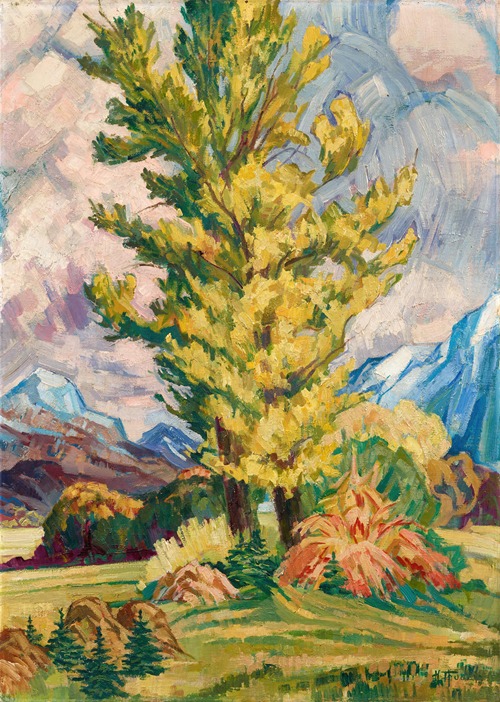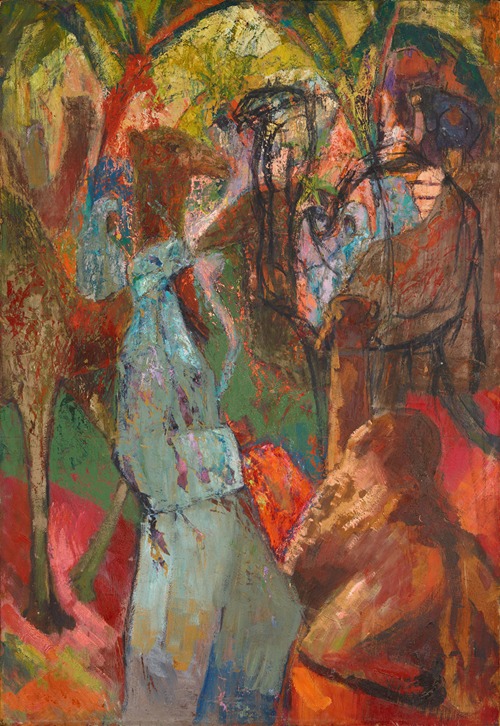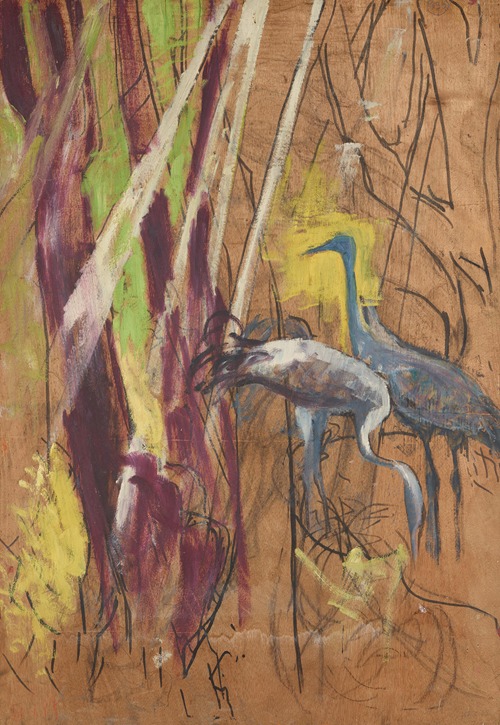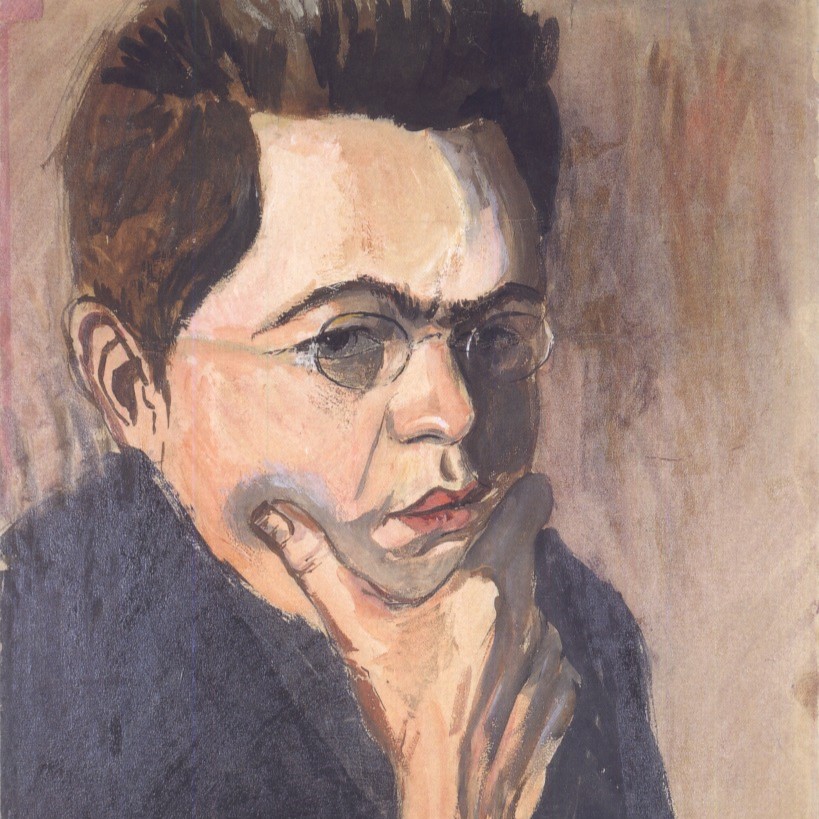




Hans Thuar was a German painter. He mainly painted landscapes and is considered a representative of Rhenish Expressionism.
In 1892, Thuar's father became the head of an insurance company, and the family had to move to Cologne. He attended school there from 1893 to 1907 and met August Macke at Easter 1897, with whom he formed a lifelong friendship. On May 12, 1899, he was run over by a horse-drawn tram and lost both legs. Macke visited him daily in hospital and helped him to regain his courage to face life. They made their first attempts at painting and remained in contact even after Macke moved to Bonn.
Thuar's first oil painting was created in 1903, and he took lessons from Professor Wegelin in Cologne. From 1907 to 1908, he attended the Düsseldorf Art Academy, and then continued his education independently. In 1911, he participated in the Cologne Secession for the first time. Further group exhibitions followed: in 1912, the Sonderbund exhibition in Cologne; in 1913, the Cologne Secession, the exhibition of Rhenish Expressionists in Bonn, and the First German Autumn Salon in Berlin. After the death of his friend in the first weeks of the First World War, he did not paint for years. It was only after the war that he returned to painting. His most important creative period lasted from 1920 to 1926. After that, he was less active as an artist and only at greater intervals.
During this time, Thuar devoted himself very intensively to research and exploration of all topics related to essential oils and aromatherapy. For this, he operated under the name “HATERA” (Hans Thuar Ramersdorf) or also under “RA-Laboratorium” and developed and distributed, in particular, the product Cerapin, which he had developed on the basis of the active ingredients of essential oils and other waxes and which was available in three variants.
On October 18, 1944, his house in Ramersdorf was destroyed, and he was evacuated to Schwarza near Rudolstadt. A few months after the end of the war, he died in Bad Langensalza.
With his girlfriend Else, Thuar had a daughter, Hilde-Vera. On October 31, 1913, he married Henriette Rasch (1890-1977), with whom he had three daughters. Their daughter Gisela (* 1914) married Wolfgang Macke (1913-1975), the son of August Macke, who later published the first monograph on Hans Thuar and organized his first solo exhibition. In his memory, the director of the Kunstmuseum Bonn awards the annual Hans Thuar Prize to an artist living in the Bonn region. Bonn's Thuarstraße is dedicated to him.


